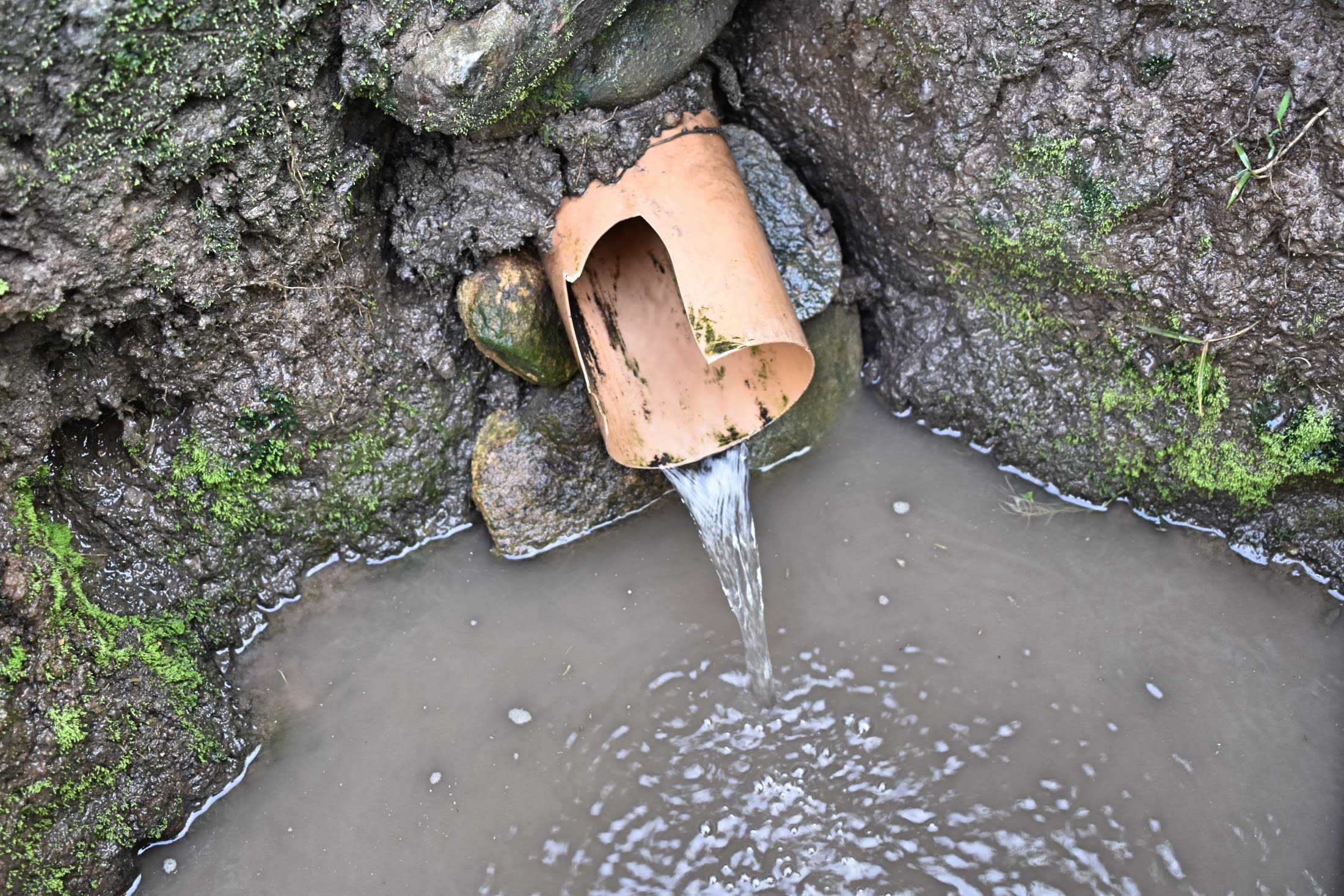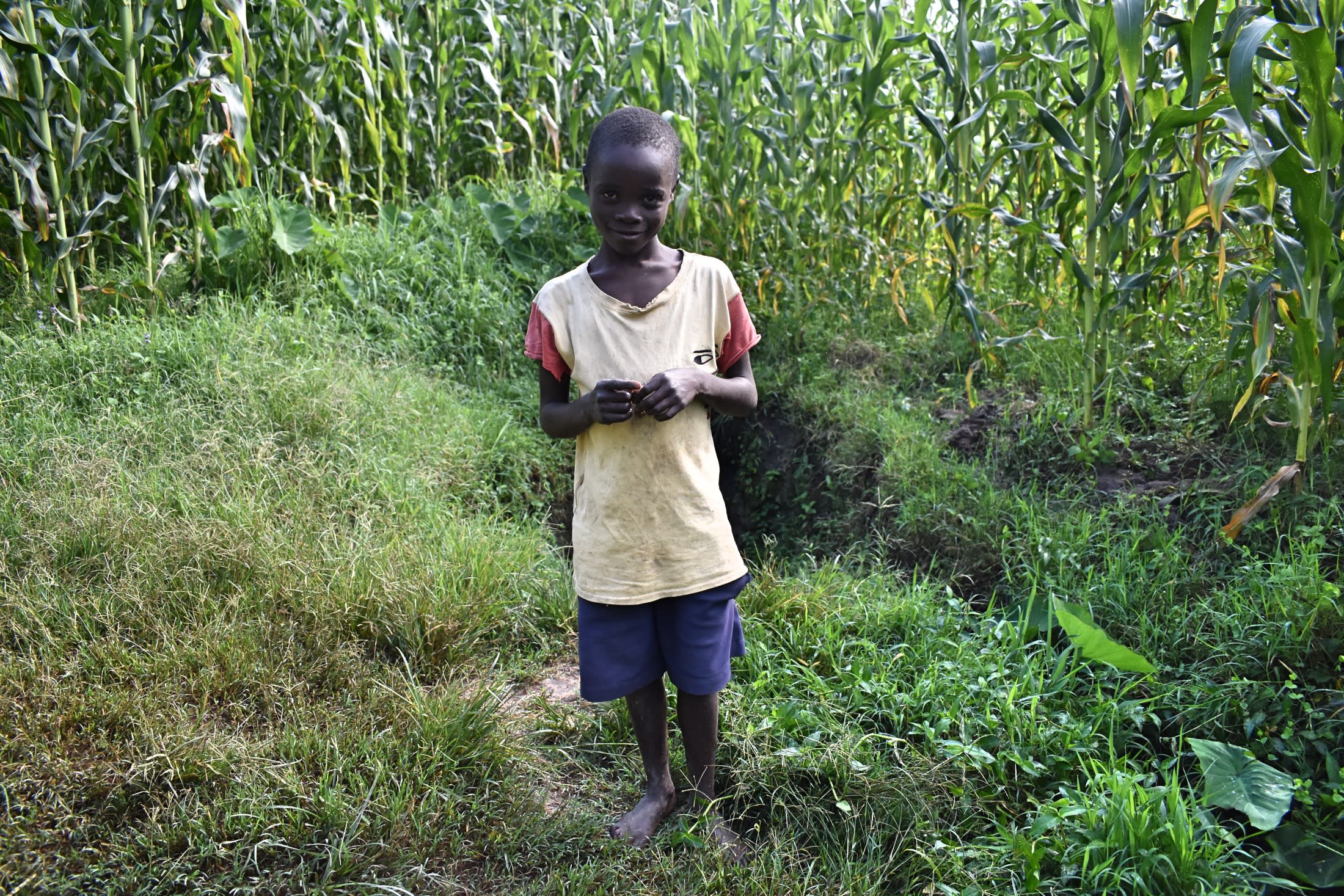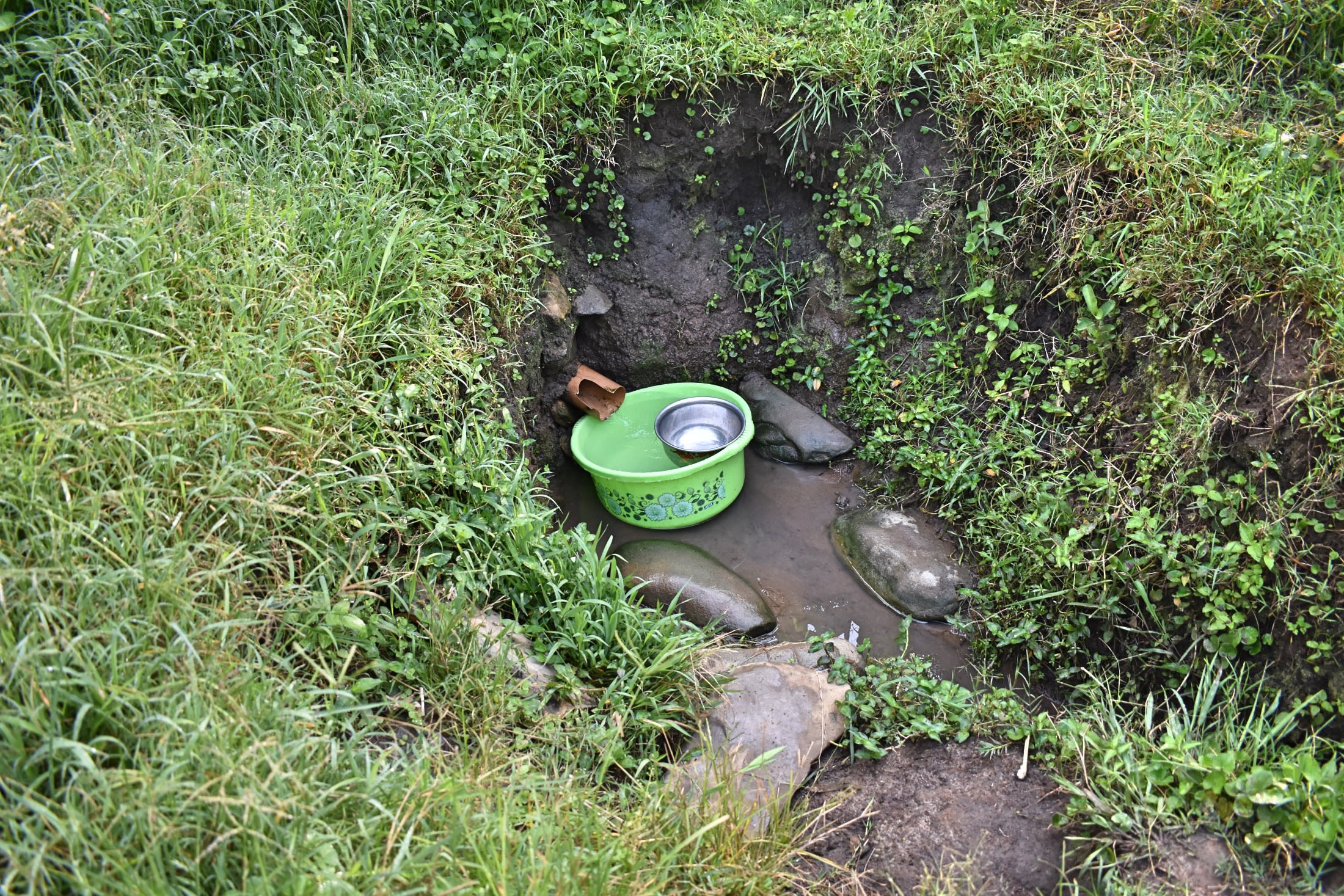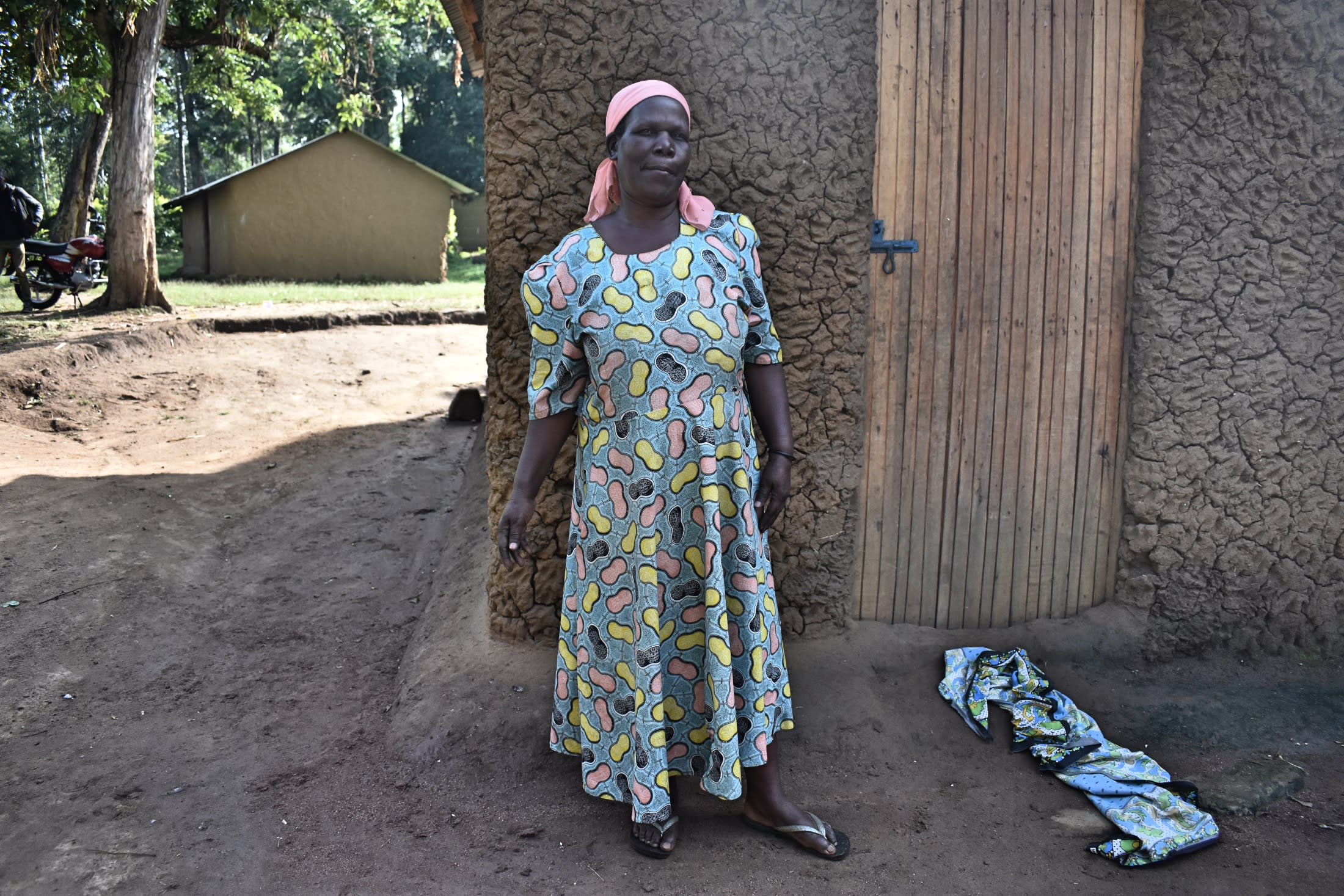Everyone in Shitoto gets up as early as possible, trying to be among the first at their spring. The belief is that Wandawa Spring's water is cleaner in the morning because it has yet to be clouded by hundreds of people's water-fetching containers. But, unfortunately, even water that looks clean still makes Shitoto's 250 people sick.
But the first ones to fetch water will still have less dirt and fewer particles to sieve out of their water storage containers. So it does make sense that so many people waiting in line for water morning and night would fight with their neighbors for their place in line. After all, the sooner each person has water, the quicker they can get on with other things.

"I fear coming to spring in the evening after school because the elders are sometimes fetching water," said 11-year-old Ismael (shown below in front of the spring). "You wait for them to finish. Therefore, you cannot go and play."

Another reason people become impatient at the spring is that it takes so long for people to fetch water in such a slick, precarious area.
"The area around this water point is unkept," said our field officer, Protus. "It's bushy and needs to be cleared. The area is also dangerous for the people fetching water. It is slippery, and therefore it poses a risk, especially during [the] rainy season. One is likely to slip and fall, and even be injured."

The spring's muddy and bushy surroundings also contribute to the contamination of the spring water—but it is an open water source, so you name the contaminant, and it is likely in the water Shitoto's people drink every day.
"You find sometimes toads are dead at the water point," said 61-year-old farmer Judith Salasia. "You cannot fetch water to use that day. You have to clean the place and wait for the bad smell to reduce before coming to fetch water."

"The community is pleading with The Water Project to help them protect the spring so that they can have access to clean water," Protus said. "The community is not in a position to single-handedly protect the spring because of the financial constraints. [The] majority of people in this area are peasant farmers who cannot afford more than two meals a day. The little resources they get [are] used in feeding the family and not to protect the spring."
What We Can Do:
Spring Protection
Protecting the spring will help provide access to cleaner and safer water and reduce the time people have to spend to fetch it. Construction will keep surface runoff and other contaminants out of the water. With the community’s high involvement in the process, there should be a good sense of responsibility and ownership for the new clean water source.
Fetching water is a task predominantly carried out by women and young girls. Protecting the spring and offering training and support will, therefore, help empower the female members of the community by freeing up more of their time and energy to engage and invest in income-generating activities and their education.
Training on Health, Hygiene, COVID-19, and More
To hold training, we work closely with both community leaders and the local government to approve small groups to attend training. We ask community leaders to invite a select yet representative group of people to attend training who will then act as ambassadors to the rest of the community to share what they learn.
The training will focus on improved hygiene, health, and sanitation habits in this community. We will also have a dedicated session on COVID-19 symptoms, transmission routes, and prevention best practices.
With the community’s input, we will identify key leverage points where they can alter their practices at the personal, household, and community levels to affect change. This training will help to ensure participants have the knowledge they need about healthy practices and their importance to make the most of their water point as soon as water is flowing.
Our team of facilitators will use a variety of methods to train community members. Some of these methods include participatory hygiene and sanitation transformation, asset-based community development, group discussions, handouts, and demonstrations at the spring.
One of the most important issues we plan to cover is the handling, storage, and treatment of water. Having a clean water source will be extremely helpful, but it is useless if water gets contaminated by the time it is consumed. We and the community strongly believe that all of these components will work together to improve living standards here, which will help to unlock the potential for these community members to live better, healthier lives.
We will then conduct a small series of follow-up trainings before transitioning to our regularly scheduled support visits throughout the year.
Training will result in the formation of a water user committee, elected by their peers, that will oversee the operations and maintenance of the spring. The committee will enforce proper behavior around the spring and delegate tasks that will help preserve the site, such as building a fence and digging proper drainage channels. The fence will keep out destructive animals and unwanted waste, and the drainage will keep the area’s mosquito population at a minimum.

 Protected Spring
Protected Spring
 Rehabilitation Project
Rehabilitation Project



































